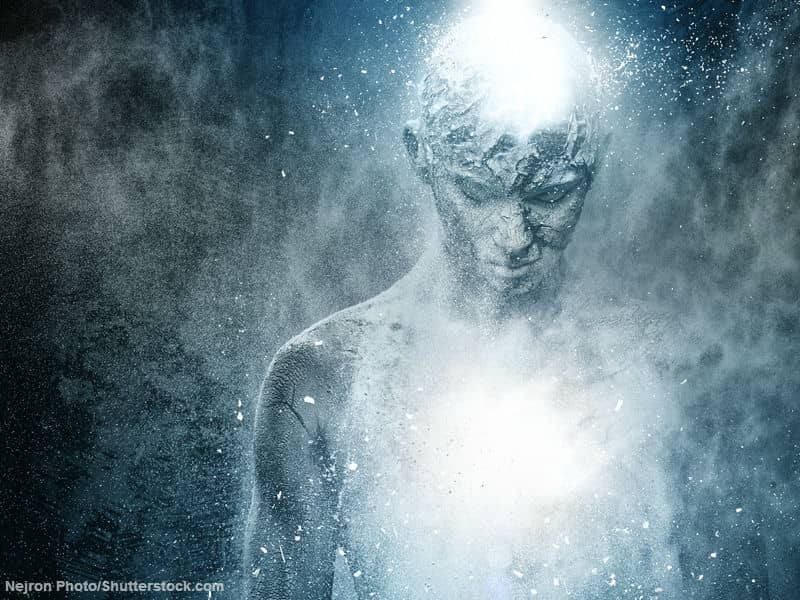In the struggle for the soul of American Jewry, the Orthodox model has triumphed. To say this is not to say the Orthodox themselves have prevailed, or that only the Orthodox denomination will survive on these shores. But the portion of American Jewry that will flourish in the future--and is flourishing already against a backdrop of ever more complete assimilation--is the portion that has accepted the central premise of Orthodoxy that religion defines Jewish identity.
The Orthodox model could not have won unless America, too, had won, for the victory of religion was made possible by the demise of secular Judaism. I use the word "demise" instead of "defeat" because Jewish secularism was not slain as much as it was loved to death. America made a promise to Jewish immigrants, and to its enduring grandeur as a nation it kept that promise. It welcomed history's wanderers into a greater whole. It absorbed the wonders Jewish culture had to offer. But once intermarriage is rampant, once bagels outsell doughnuts, once "Seinfeld" is a hit even in Boise, then Jewishness as ethnicity, as folk culture, as something separate and divisible from religion, is ceasing to exist in any meaningful way.
From the time massive Jewish immigration to America began in the late 19th century, religious Jews feared that the new land would undermine their faith. Instead, we see now, it undermined faithlessness. When the sociologist Steven M. Cohen probed the basis of Jewish identity in the late '90s, he discovered that religious practice had remained constant, even risen slightly, among Jews over the last half century. What had plummeted was almost every measure of Jewish ethnicity--friendships with fellow Jews, attachment to Israel, membership in Jewish institutions, commitment to social justice. Except for religion, Jews had little to hold onto that made them feel like Jews.
As a jazz fan, I might offer an analogy. From the late 1900s through the 1970s, jazz was revolutionized by waves of innovation, modal jazz replaced bebop, free jazz replaced modal. In the process, every rule of melody, harmony, and rhythm was shattered. And then, looking up from the wreckage, musicians realized there was nothing left to rebel against. They could only turn in one direction: to the past, to the tradition.
The same understanding is now shaping American Judaism, and the evidence of it abounds. The rancor between the denominations, genuinely bitter as it is, has obscured a different kind of dividing line--between the core of American Jewry oriented around religion and a periphery clinging to the eroding remnants of ethnicity. The Orthodox model is, in some ways, the rebellion of that fraction of American Jews who worship on a regular basis against the vast majority who show up only for the High Holy Days or a Passover seder or send out one of those popular new online holiday cards featuring Santa Claus and a menorah.
American Jewry's core announced itself in 1996 with the release of "A Statement on the Jewish Future," the product of a leadership conference convened by the American Jewish Committee. The statement placed Torah atop a list of five "fundamental values" for Jewish continuity, while omitting the concept of tikkun olam, healing the world with social justice. It endorsed a kind of internal evangelism to moderately active Jews while discounting outreach to most intermarried couples and disparaging "inclusivity [that] runs the risk of degenerating into a vague universalism." Most important, the statement carried the endorsement of 30 rabbis, scholars, and communal leaders, running the gamut from Reform to Modern Orthodox, from feminists to Yiddishists.
The Central Conference of American Rabbis, the association of Reform clergy, adopted a platform that reversed the branch's historical contempt for ritual and religious law by commending "the ongoing study of the whole array of mitzvot [commandments]." Over months of acrimonious internal debate, it is true, the platform was watered down and its title changed from the provocative "Ten Principles" to the pallid "Statement of Principles." However diluted, it stood at a vast remove from the Reform movement's original dismissal of much rabbinic law as "altogether foreign" to a "progressive and rational religion."
Rabbi Eric Yoffie, president of the Union of American Hebrew Congregations, devoted most of his address to the Reform group's general assembly to declaring a "worship revolution" of more prayer, more Torah study, more Hebrew literacy. The synagogue, he told his listeners, "is first and foremost a center of avodah--of worship, reverence, and awe." Not until the 11th page of a 16-page address did Rabbi Yoffie launch into a plea for gun-control legislation, the sort of liberal political stance that in the past probably would have dominated the speech.
Religious day-schools, meanwhile, are booming. Where 323 schools served 63,500 students in 1965, 670 schools served 185,000 students in 1998. In less than the last decade, enrollment in non-Orthodox schools rose by one-quarter to 37,000. As a raw number, it is modest. As an indication that certain Reform and Conservative Jews have accepted an Orthodox article of faith, it is profound. Very deliberately, American Jews long eschewed parochial schools in the belief that they would "take children out of the general American environment and train them to lead segregated lives," as a 1956 report put it. The presence of American Jews as students, teachers, and principals largely created the golden age of public education in the mid-20th century. So the recent influx of less observant Jews into day schools signals a stunning acknowledgment of Orthodox criticism: that the system of afternoon and weekend religious schools has failed, that Jewish knowledge and identity can be instilled only through the sectarianism of a day school, through a selective disengagement from the American mainstream.

